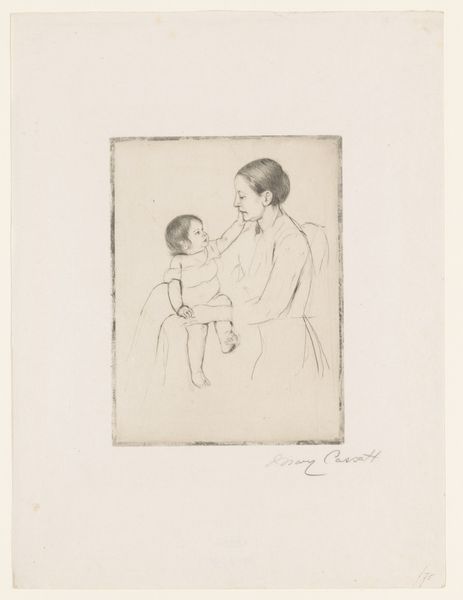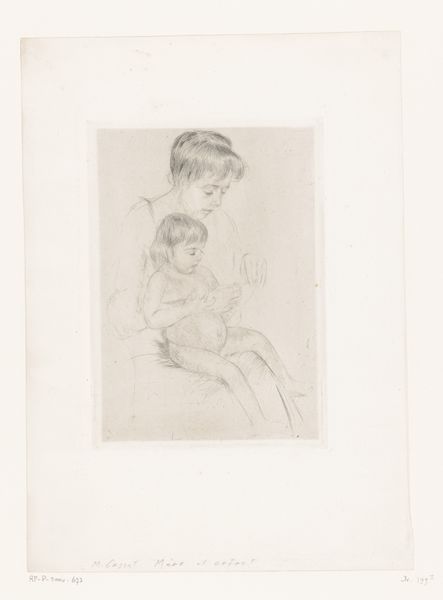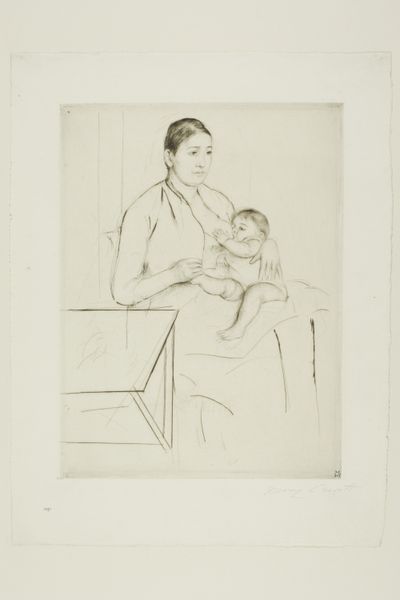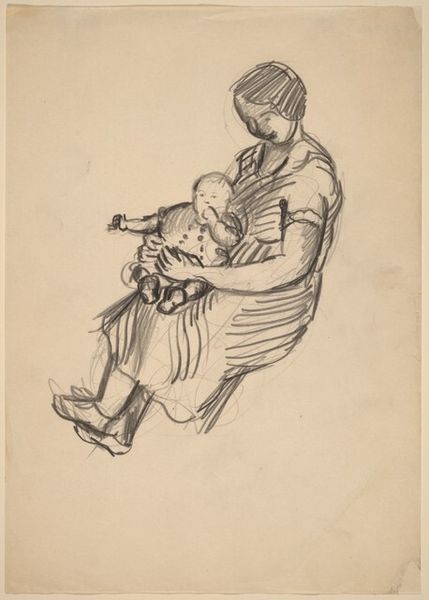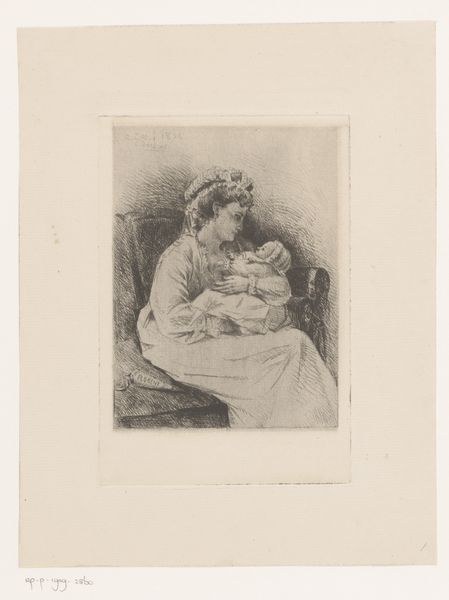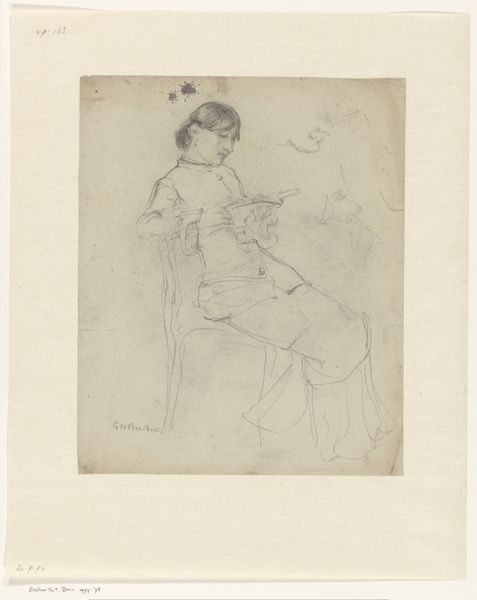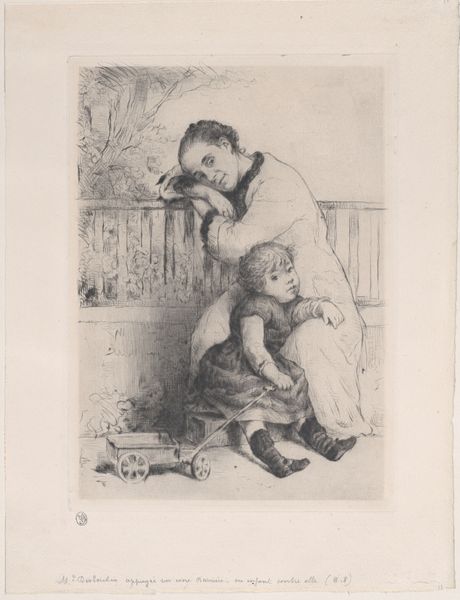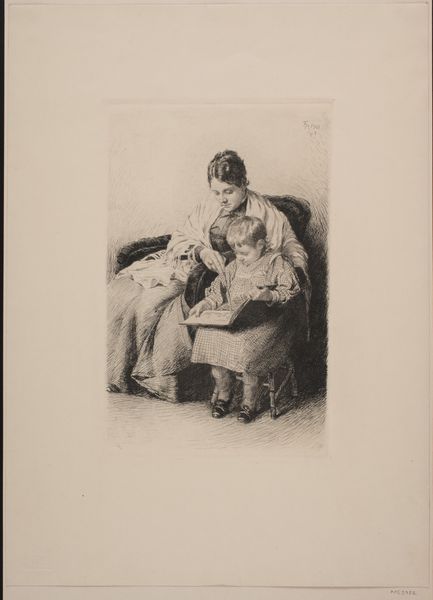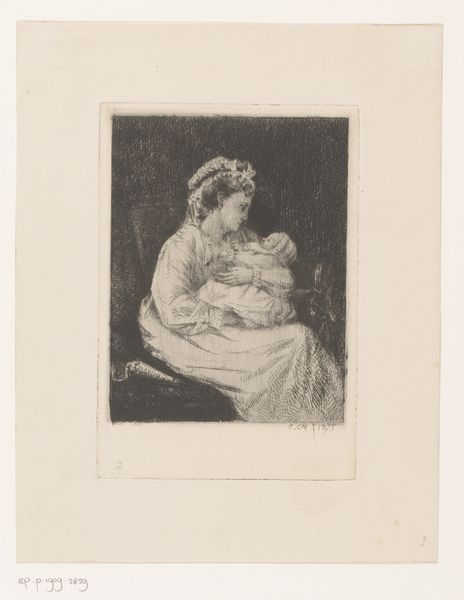
drawing, paper, pencil
#
portrait
#
drawing
#
impressionism
#
pencil sketch
#
paper
#
child
#
pencil
#
genre-painting
Dimensions: height 189 mm, width 138 mm
Copyright: Rijks Museum: Open Domain
Editor: So, this is Mary Cassatt’s "Op de bank," from around 1889. It’s a pencil drawing on paper, and it feels…intimate. It captures a mother and child in a really casual pose. What do you see in this piece, beyond the surface? Curator: Beyond the intimate portrayal of motherhood typical of Cassatt’s oeuvre, I see a subtle commentary on the societal constraints placed upon women, particularly mothers, during the late 19th century. Look at the child clinging to the mother. Doesn't it seem to visually encapsulate the overwhelming demands on women's time and energy? Editor: I see that, definitely, but I guess I hadn’t considered it as something actively challenging those constraints. Curator: It’s not overt, no, but consider the Impressionist movement itself: a break from academic tradition and a turn toward everyday life. Cassatt chose to depict the domestic sphere, elevating it to the level of fine art. By focusing on these moments, wasn't she subtly claiming space for women’s experiences within a patriarchal art world? Editor: That's a great point. So, it's not just a genre painting of mother and child, but a quiet act of resistance? Curator: Precisely. And what do you think of the composition? Does the lack of detail and the focus on line work play into this reading? Editor: Now that you mention it, the sketch-like quality almost feels unfinished, maybe reflecting the never-ending nature of motherhood? Curator: Interesting observation! It opens the door to thinking about the performative aspect of gender, too, since she portrays domesticity so seemingly 'off the cuff.' These impressions, the way she quickly renders the scene, still communicate a world of meaning. Editor: This has really changed how I see Cassatt's work. It's more than just pretty pictures of mothers and children. Curator: Exactly! It is located within broader narratives of gender, identity and politics. Art like this promotes change because we get a glimpse of something deeper.
Comments
No comments
Be the first to comment and join the conversation on the ultimate creative platform.
